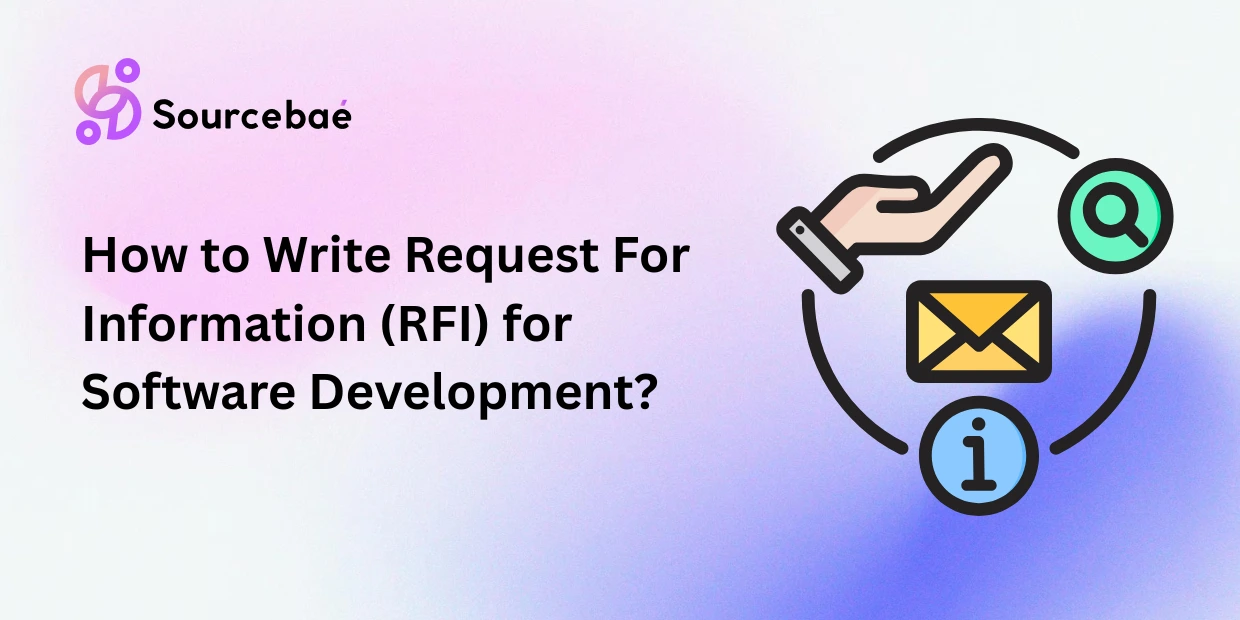When it comes to initiating a software development project, one of the crucial steps is crafting a Request for Information (RFI). An RFI serves as a formal document that invites software development companies to provide information about their capabilities, expertise, and proposed solutions. Writing a well-structured RFI is vital to ensure you receive accurate and relevant responses from potential partners. In this guide, we will walk you through the process of creating a compelling RFI for software development, offering expert insights and valuable tips every step of the way.
Before diving into the details of how to write an RFI for software development, it’s essential to understand its primary purpose. Your RFI serves as the initial point of contact with potential software development companies. It should clearly convey your project’s goals, requirements, and expectations. Additionally, an RFI allows you to assess the capabilities of prospective partners and gather crucial information to make informed decisions.
Conduct Market Research
To start, research the software development market to identify potential companies that align with your project’s scope and objectives. Look for companies with a proven track record in the specific domain or technology stack you require.
Analyze Competitors
Examine competitors’ RFI documents if available. This can provide valuable insights into industry standards and help you identify areas where you can stand out.
Creating a Detailed RFI Outline
A well-structured RFI should include the following sections:Provide a brief overview of your organization and the purpose of the RFI. Include a concise description of your project and its objectives.
Company Background
Request information about the software development company‘s history, size, and experience. This section helps you gauge their credibility and expertise.
Project Requirements
Clearly outline your project’s technical requirements, goals, and expected outcomes. Include any specific technologies or methodologies you prefer.
Deliverables and Timelines
Specify the expected deliverables and project timelines. This helps potential partners understand the project’s scope and deadlines.
Budget and Payment Terms
Indicate your budget range and preferred payment terms. This information ensures alignment with prospective partners on financial matters.
Evaluation Criteria
Outline the criteria you will use to evaluate responses. This may include factors such as expertise, project approach, and cost.
Writing the RFI
Now that you have a clear outline, it’s time to start writing the RFI. Ensure that your content is clear, concise, and free of jargon. Use straightforward language to convey your message effectively.
Review and Proofread
Before finalizing your RFI, thoroughly review and proofread the document. Typos and errors can undermine your professionalism. Ensure that the RFI is coherent and logically structured.
FAQs
What is the purpose of an RFI in software development?
An RFI serves as a formal document to solicit information from potential software development partners. It helps in assessing their capabilities, expertise, and proposed solutions before initiating a project.
Why is preliminary research crucial before writing an RFI?
Preliminary research helps you identify suitable software development companies and industry standards. It ensures that your RFI targets the right audience and aligns with industry practices.
What should I include in the project requirements section of the RFI?
In the project requirements section, provide a detailed description of your project’s technical needs, goals, and preferred technologies. This helps potential partners understand the project scope.
How do I evaluate responses to the RFI?
Responses should be evaluated based on predefined criteria such as expertise, project approach, and cost. This ensures an objective assessment of potential partners.
Is it essential to include a budget in the RFI?
Yes, including a budget range in the RFI is essential to align expectations with potential partners. It helps in filtering out companies that may not meet your budget constraints.
What is the best way to format an RFI document?
An RFI should be well-organized with clear headings and sections. It should follow a logical flow, starting with an introduction and covering all relevant aspects of the project.
Conclusion
Writing an effective Request for Information (RFI) for software development is a critical step in finding the right partner for your project. By following the comprehensive guide provided here, you can create an RFI that attracts top-tier software development companies and ensures that you receive responses tailored to your project’s needs. Remember that a well-crafted RFI sets the stage for successful software development collaboration.
READ MORE: HIRE REACT DEVELOPER





